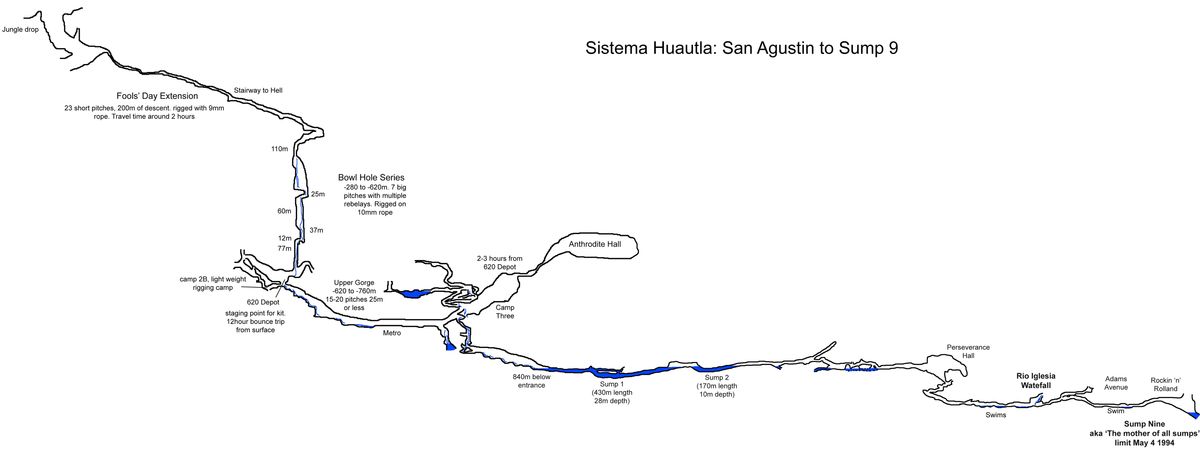World 🢖 North America 🢖 Mexico 🢖 Oaxaca
Caves 🢔 Geological wonders 🢔 Categories of wonders
Wonder
Sistema Huautla
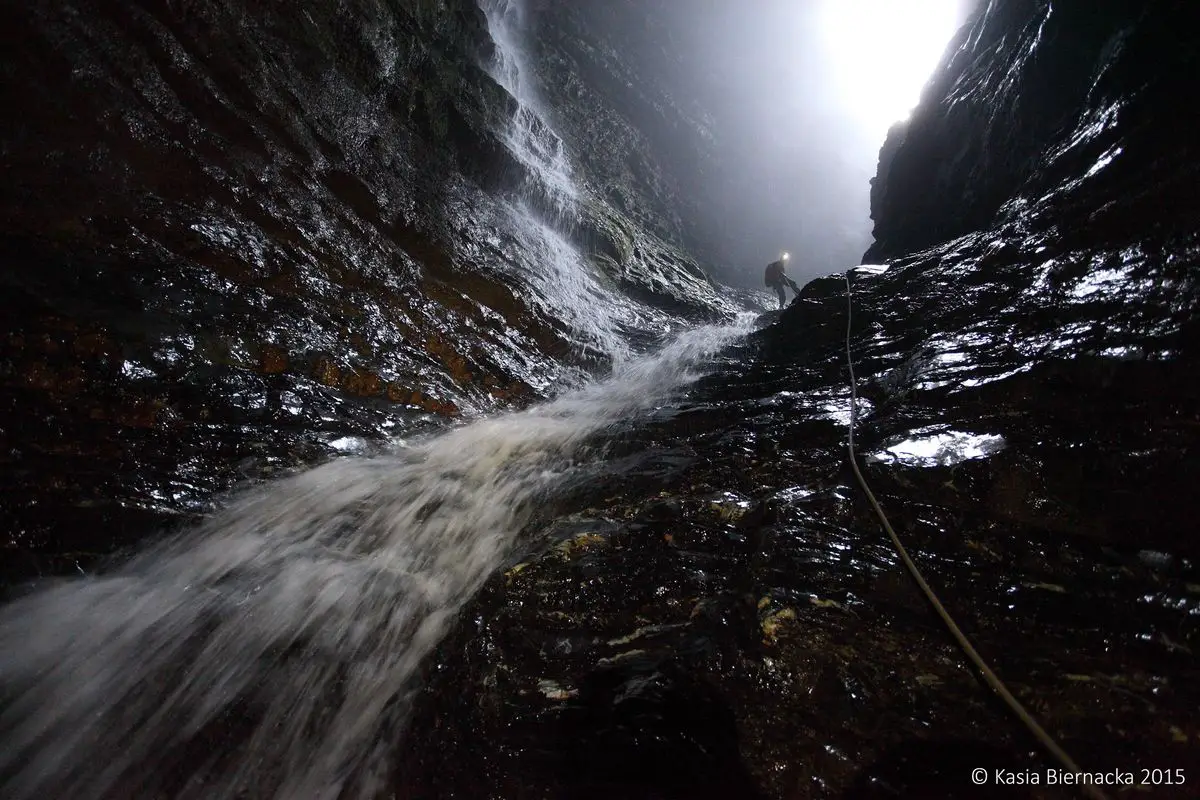
 In short
In short
The deepest known cave in the Americas, in the Western Hemisphere, is Sistema Huautla. The known depth of the cave is 1560 m, length of its passages – 100 114 m.
 50.5%
50.5%
GPS coordinates
Location, address
Alternate names, parts of the cave system
Length
Depth
Map of the site
If you see this after your page is loaded completely, leafletJS files are missing.
 In detail
In detail
Description
Sistema Huautla is one of the best-known caves among cave explorers, especially Americans. It belongs to the most spectacular caves in the world. The landscape in the cave is quite diverse – there are amazing and very large cave formations, giant cave rooms, waterfalls, lucid lakes, and sumps.
Sistema Huautla has developed in Sierra Mazateca Mountains, in Cretaceous (mainly – Middle Creataceous) limestones through karst processes. Part of the cave system is protected by overthrusted Jurassic flysch – a sequence of sandstone and shale that does not dissolve in water. This is an unusual case where older rocks cover younger ones.
This area receives much rain and, as a result, there have developed many extensive cave systems.
The known length of cave passages is 100 114 m (26th in the world) and the depth is 1560 m (11th in the world) (figures for July 2022). The cave system has 29 known entrances.
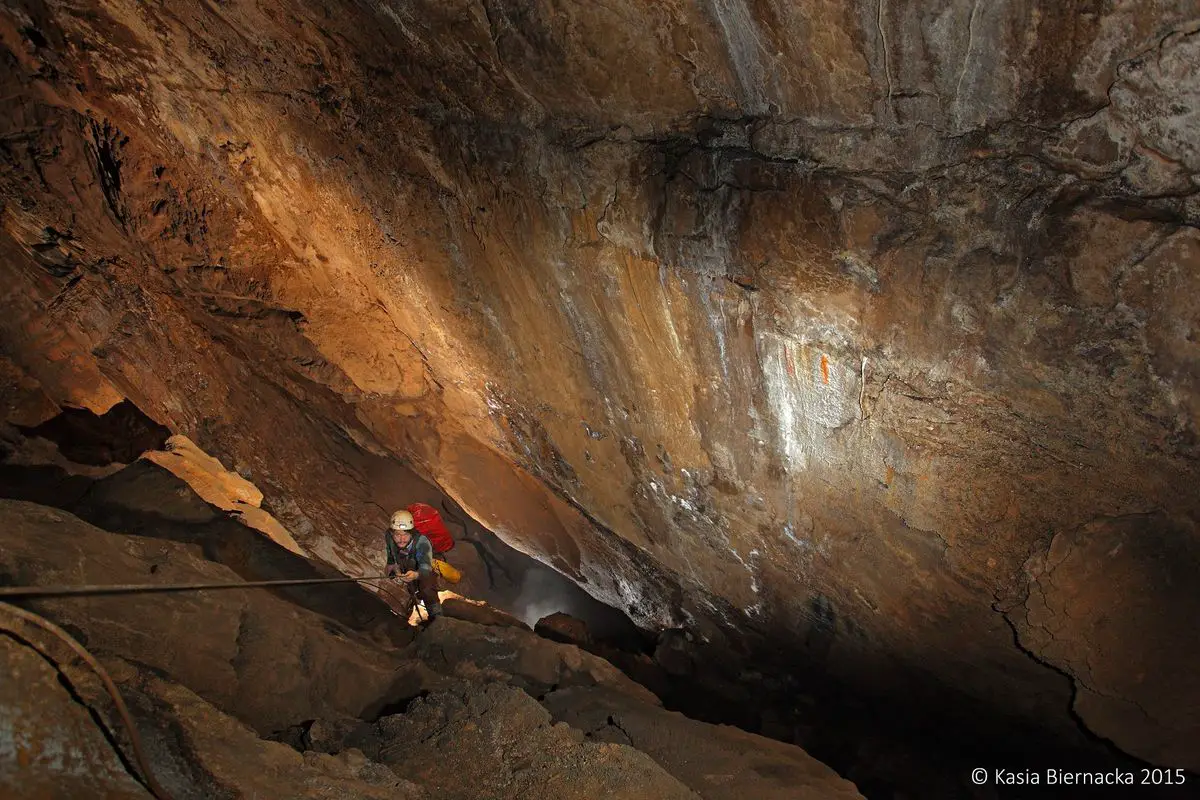
The cave depth is measured from the highest point in the cave system (Nita Nanta entrance) to the lowest point – the maximum reached depth in Sump 9 (nicknamed also “The Mother of All Sumps”).
The main entrance is Sótano de San Agustín – this part, if measured separately, is 859 m deep.
Sistema Huautla is a dangerous cave and its research requires a very high level of skills and diverse equipment. Especially complex are the numerous sumps that require very risky cave dives. Occasional rain somewhere in the mountains may bring sudden flash floods. Expeditions should bring through these sumps all their belongings because crossing the numerous sumps takes weeks and even months, all the time bearing in mind that flood can come any minute.
This giant cave has a rich cave fauna – there are known 35 species, including at least one new species for the science – a tarantula spider Hemirrhagus billsteelei.
History
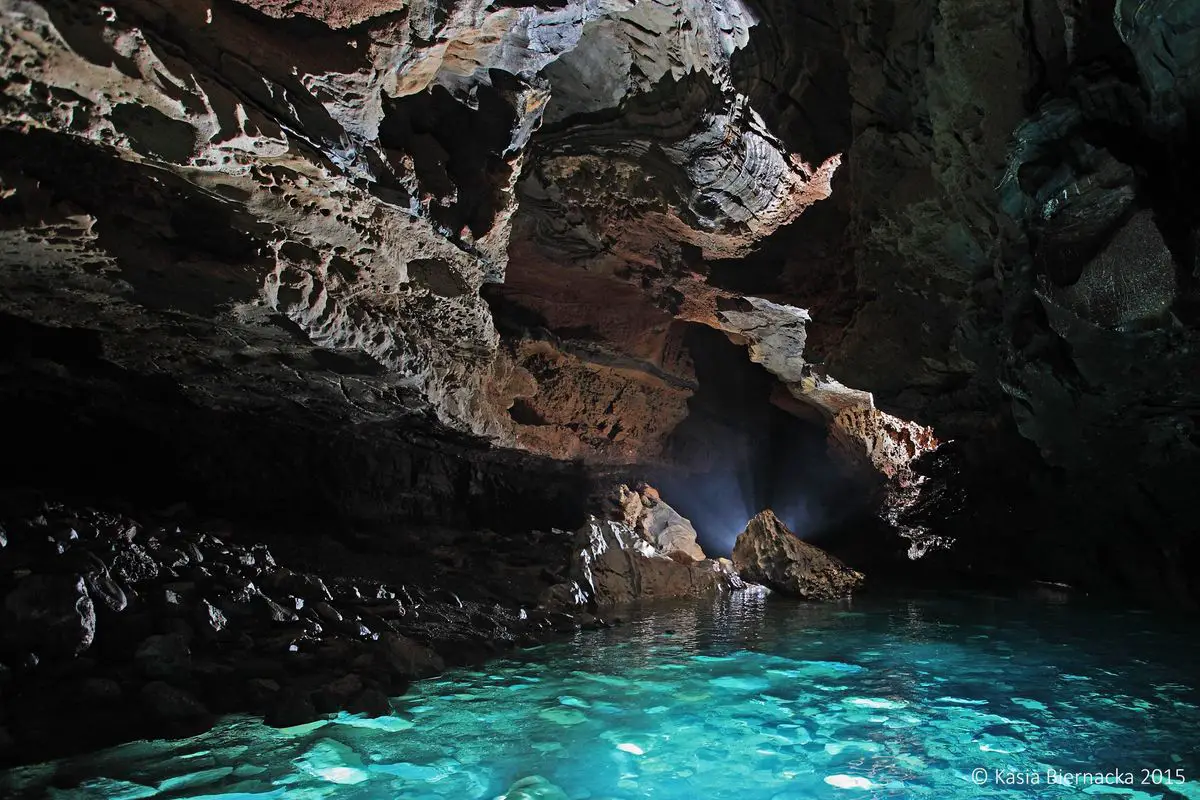
The entrances in the caves almost certainly were known to locals – Mazatec people. In their culture caves were important for religious ceremonies and also – burial, although there is no information on whether any part of Sistema Huauatla contains such archaeological values.
Cave researchers discovered the entrances in Sistema Huauatla in 1965, during the expedition of cavers from Austin, Texas. They discovered several cave entrances that were fairly close together and it was assumed that these all belong to a single cave system.
In 1977 the depth of 1 325 m in the San Agustin sump was reached. Several times (in 1979 and in 1981) expeditions tried to dive through this sump.
In 1984 the giant southern part of the cave – Cueva de la Peña Colorada – was explored by the legendary US speleologist Bill Stone.
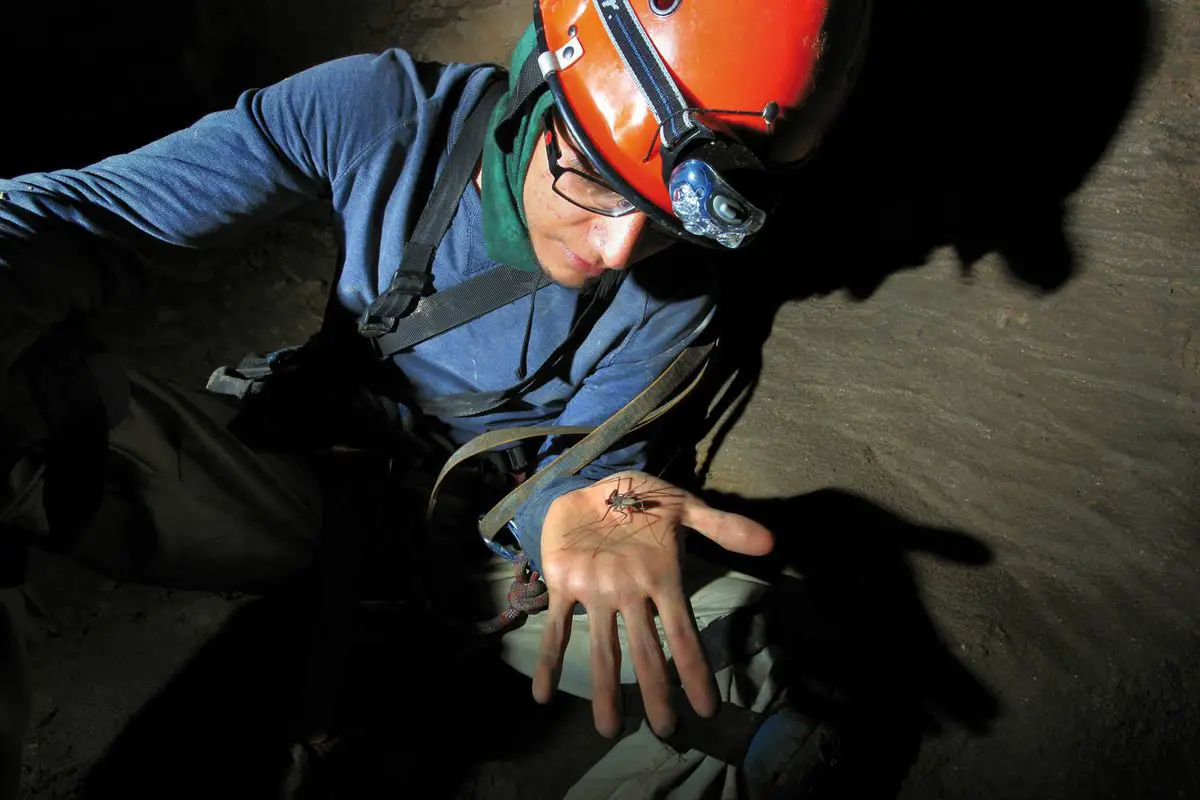
Especially complex and dramatic expedition took place in 1994, also led by Bill Stone. It could be one of the largest cave exploration expeditions ever: it lasted 135 days and involved 44 people.
There was used a specific technology: a rebreather. This technology was developed especially for the exploration of Sistema Huautla and it can recycle the breathed air, in order to dive through large flooded sections – sumps.
The expedition reached Sump 9 – an extremely complicated sump that was dived for 440 m in length and 81 m in depth. It led towards the only exit of the cave stream – the spring of Peña Colorada some 10 km south of the San Agustin entrance, but this connection was not dived through and more than four kilometers of unexplored cave system were in between.
Another large expedition with 40 participants was organized in 2013. Over a two month period, they reached the depth of 1 545 m and the total length of cave passages reached 64.2 km.
A large-scale long-term research project – Proyecto Espeleológico Sistema Huautla (PESH) – was started in 2014 with yearly expeditions in the cave system.
It is expected that further research will make the cave longer and, possibly, also deeper.
References
- Sistema Huautla Proyecto Espelologico. Contains a large set of diverse maps. Accessed in 2 April 2022.
- Cueva de la Peña Colorada, Beyond the Sump. Accessed in 2 April 2022.
- Maps of Cueva de la Peña Colorada, Beyond the Sump. Accessed in 2 April 2022.
- Andreas Klocker, Cueva de la Peña Colorada, Sidetracked Magazine. Accessed in 2 April 2022.
- James H. Smith, Jr. Hydrogeology of the Sistema Huautla Karst Groundwater basin (PDF file), Association for Mexican Cave Studies (AMCS) Bulletin No 9., 2002. Accessed in 2 April 2022.
 Linked articles
Linked articles
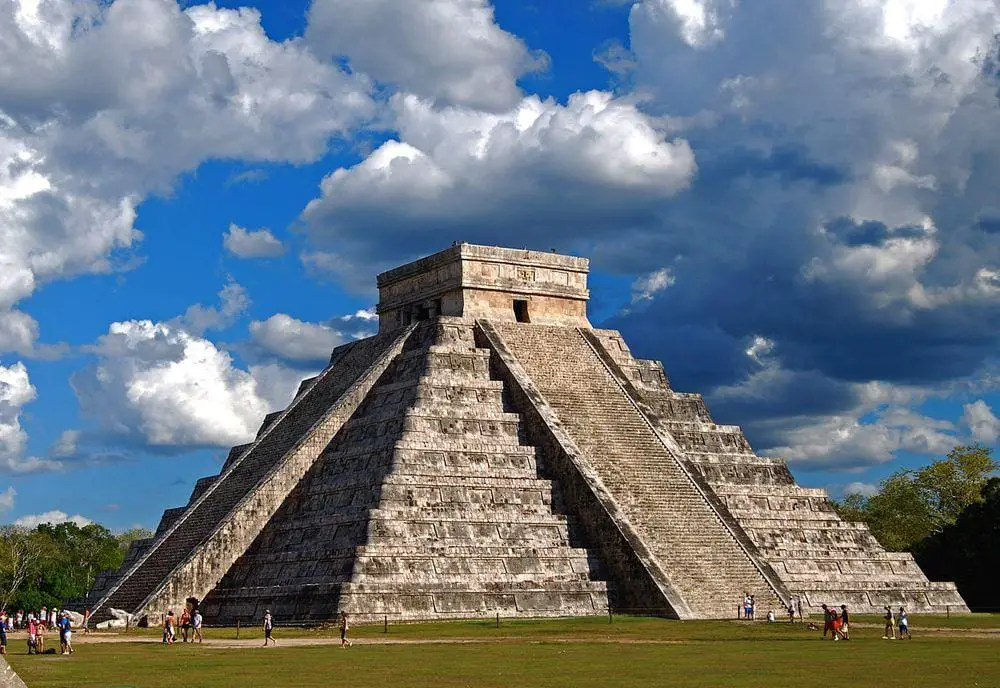
Wonders of Mexico
Few countries in the world can offer such an array of unique and astounding attractions as Mexico.
The area of this country was the cradle of several highly developed indigenous civilizations and some regions in the country are dotted with remnants of ancient cities with temples, palaces, and pyramids.
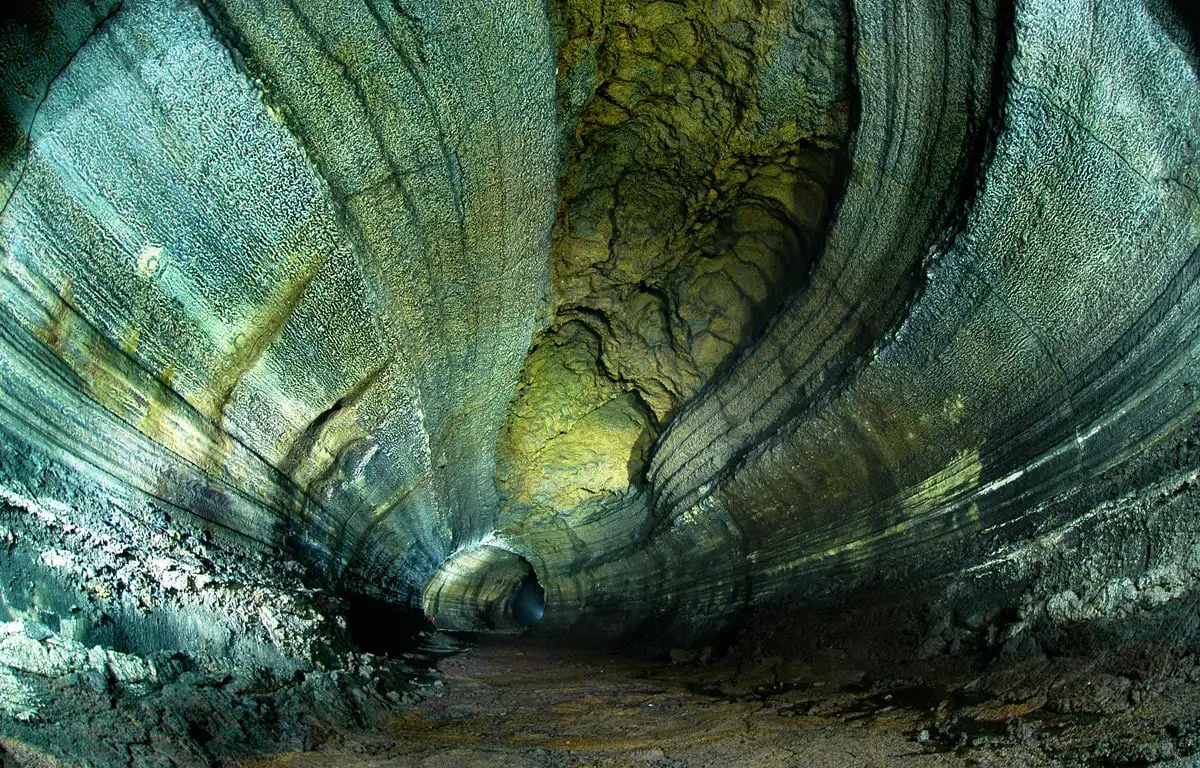
Caves
Every year there are reported exciting discoveries of new caves and discoveries of new qualities such as cave paintings in the ones known before. But there still is a feeling that our knowledge covers just a small part of all these monuments of nature.
Though, those which are known to us, offer a surprising diversity of unusual features and impressive sights.
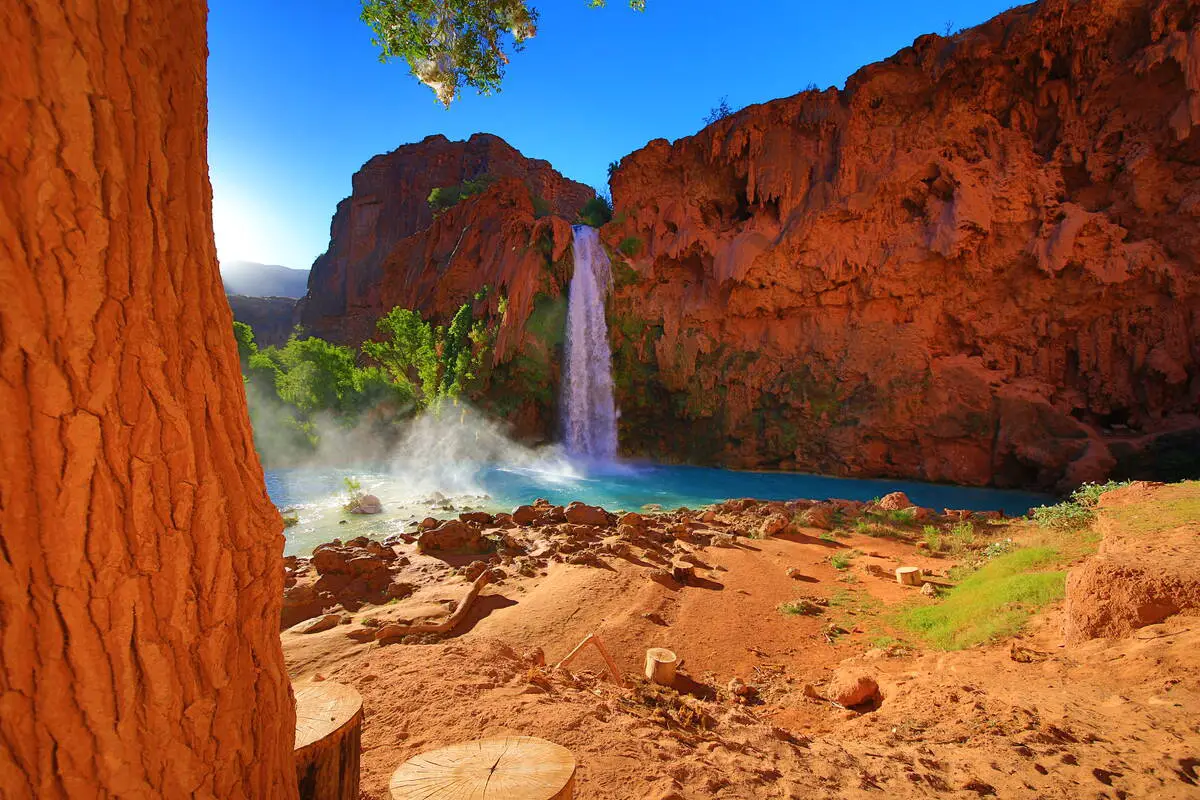
Wonders of North America
North America is a very diverse continent that extends from the northernmost land of the world to the moist tropical wilderness of Darien Gap. The most amazing wonders of North America are the prehistoric monuments of Mesoamerica, the geysers of Yellowstone, and colonial architecture.
 Recommended books
Recommended books
100 of the Deepest Caves In the World
Are you looking for a journey that will take you through 100 of the Deepest Caves In the World, along with funny comments and a word puzzle? Then this book is for you. Whether you are looking at this book for curiosity, choices, options, or just for fun; this book fits any criteria. Creating 100 of the Deepest Caves In the World did not happen quickly.
Huautla: Thirty Years in One of the World’s Deepest Caves
Huautla: Thirty Years in one of the World’s Deepest Caves is the story of the exploration of a vast and very deep cave system near the town of Huautla de Jimenez, Oaxaca, Mexico, approximately 200 miles southeast of Mexico City. Since the mid-1970s, and continuing to the present day, American speleologists have organized expedition after expedition to explore, map, and study these caves.

